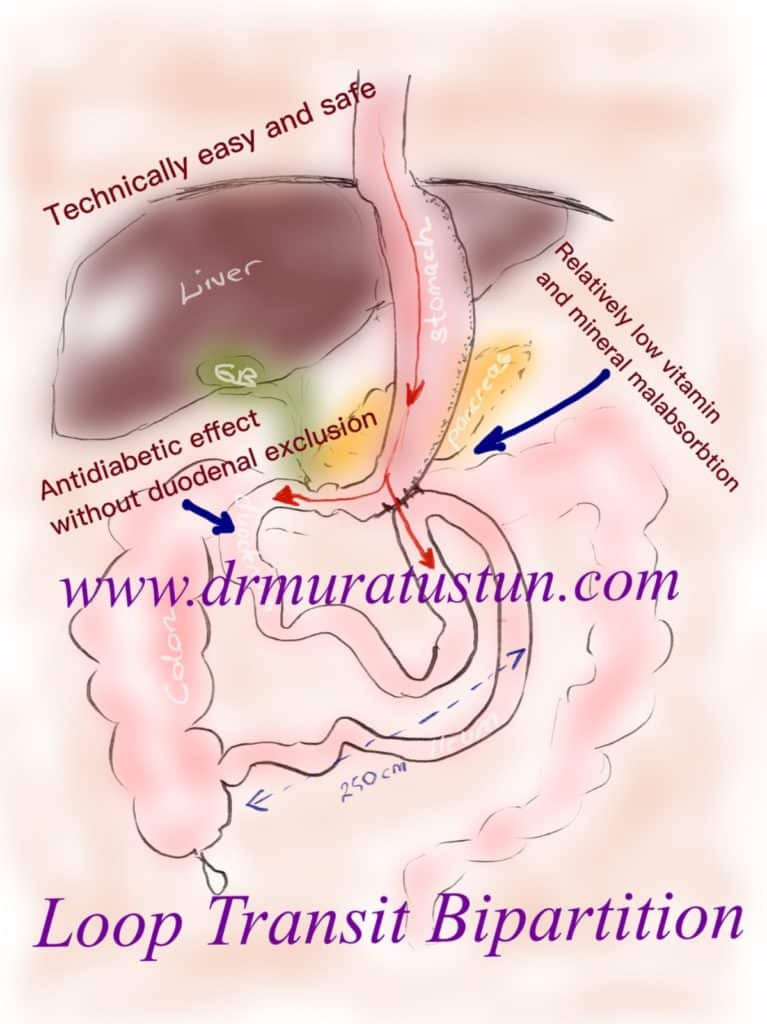Evolutionary Reasons of Obesity and Diabetes
Humans learned to prepare their food by picking the wealthiest parts of it and disregarding the low nutritive components, as several other animals do, specifically if there is profusion. However, extremely different from various other animals, we began food preparation, boiling, as well as liquefaction of food to make nutrients more offered. Just transforming apples right into the apple puree causes substantial adjustments in the models of absorption and glycemic action after a dish.

From an evolutionary point of view, the food industry recently created extremely new processes, such as refining, extrusion cooking, surge puffing, utilizing extreme temperature levels and stress, or duplicated wetting and drying out of food. Such extremes assist in the food digestion of starches. In fact, these procedures work as exterior digestion. Often we are provided, with no effort or price, entirely absorbed food, such as pure glucose. In recent decades, such foods have become available on a daily basis, as well as they fully please our most primitive impulse: obtaining nutritious food. The use of advertising aimed at getting to economic goals as opposed to dietary objectives intensifies the clinical trouble.
Industrialization made refined food readily available, plentiful, and low-cost. In the last 4 decades, a high rise in the incidence of obesity and also related conditions has actually been observed in well-off, industrialized areas, where this "modern diet plan" has actually been intensively introduced. The physical links between boosting usage of refined foods as well as the boosted incidence of disease are beginning to be understood. Evidence from previous research recommended that too much proximal absorption as a result of dietary treatments could be the cause for neurohormonal conditions.
A plentiful high-glycemic-index diet regimen provokes quick, early, as well as intense absorption; as an apparent consequence, proximal sections of the small bowel are required to overwork, whereas distal components are subjected to proportionally fewer nutrients. The modern-day diet regimen is absorbed mostly via the proximal bowel; the absence of a distal reaction and also the too much proximal stimulation could be harmful.
In 1998, the globe was captivated by a study that investigated whether type 2 diabetic issues mellitus (T2DM) could be an illness of the foregut. The nonrestrictive and non malabsorptive impacts of bariatric surgical treatment ended up being a subject of passion. On the basis of these components, specialists supposed that the discussed dietetic adjustments that intensify proximal absorption indeed reduce distal absorptive job, creating signaling disorders.A medical strategy was recommended to counterbalance the gastrointestinal system signaling focusing on enterohormonal modification. It was the first technique originally developed to maximally prevent limitation and also malabsorption rather than inducing them for healing functions.
Big meta-analyses showed that the bariatric treatments that work best (in regards to fat burning and metabolic enhancement) are those that minimize the quantity of food that is presented to the foregut and that boost transport of food to the hindgut. If a little segment of the proximal bowel is left out, then great outcomes still depend on some restriction, as in the Roux-en-Y Gastric Bypass. However, if a very long proximal segment is excluded, as in the BPD, then limitation is no longer needed completely for metabolic outcomes as well as weight reduction, yet malabsorption ends up being a worry.
Progressively, it became clear that limitation and malabsorption were not the main causes for the great outcomes of present bariatric treatments, as well as the enterohormonal modifications that these treatments cause have been discovered to contribute in the success of bariatric treatments. This technique consisted of various treatments capable to trigger metabolic treatments. Among them, it was observed that sleeve gastrectomy and also transit bipartition were highly efficient. Main goal of transportation bipartition is to profit our clients by counterbalancing the dangerous effects of the modern diet. Without exemptions and also with a basic operation, SG + TB amplifies the nutritious stimulation of the distal gut while concurrently lessening the direct exposure of the proximal bowel to nutrients without totally deactivating duodenum and jejunum.
In this short article, which we have provided thorough details regarding the transit bipartition surgical procedure, which we have quickly clarified above, we will additionally respond to one of the most interested inquiries such as "What is the transit bipartition surgical treatment?", "That can apply the transit bipartition surgical procedure?", "What are the advantages and also downsides of transportation bipartition surgical procedure?"

Transit bipartition surgery, also known as surgical treatment of diabetes, is a type of surgical operation that is carried out amongst the metabolic surgery procedures, which is perfect for Type 2 diabetes mellitus patients with an excess weight issue, and also which is generally done by laparoscopic method. The procedure combines a typical sleeve gastrectomy with a connection in between stomach and the distal small bowel; this creates a faster way to the ileum while preserving access to the duodenum. After this operation, in which the continuity of the stomach and duodenum is preserved, there is no severe decrease in the absorption of minerals and vitamins necessary for the body.
Very impressive and reliable outcomes are acquired with the transit bipartition surgery executed for the therapy of individuals with Type 2 diabetes mellitus, which is identified by the pancreas not producing sufficient insulin or there is an extreme insulin resistance in the body. After the transit bipartition surgery, which gives a brand-new possibility to people with type 2 diabetes as well as those who likewise have secondary health problems as a result of their excess weight, even lifelong supplementation is not needed for most individuals. After the operation, which is finished in approximately 1 hr, individuals can get rid of type 2 diabetes, lose their excess weight, as well as improve their health problems due to excess weight. Given that little incisions are made in the abdominal region during the laparoscopic surgical procedure, the scar issue does not trouble the individuals. Additionally, recovery period would be extremely fast as well as comfortable after laparoscopic transit bipartition surgery.
Transit bipartition, which is a metabolic surgical procedure approach developed for Type 2 diabetes surgical treatment, additionally makes it possible for weight problems in patients with a body mass index more than 35 to lose weight securely. For transit bipartition surgical procedure, it is necessary to execute comprehensive preoperative examinations prior to the procedure to establish whether patients are suitable. Quickly, we can list the qualification requirements for transit bipartition surgery as complies with:
Transit bipartition operation would be performed under general anesthesia and finished usually in 1 hour. During the surgery utilizing the laparoscopic approach, small cuts will certainly be created on the abdominal area. Because of this, the recovery and healing period after transit bipartition with keyhole technique would be faster and more comfortable than open surgery.
To start with, standart sleeve gastrectomy procedure would be carried out throughout transit bipartition surgical treatment. The brand-new tummy created after stomach surgery performed as part of transit bipartition is slightly larger than the stomach developed during traditional sleeve gastrectomy operation.
In the second stage of the transit bipartition surgery, the initial 250 centimeters of the small intestine with a length of 5 meters is preserved as well as the small intestine is cut in half from the marked component. The cut part of the small intestine is incorporated right into the shrunken belly and the totally free portion of the small intestine is incorporated in the last 150 cm of the small intestine. This way, when the individual eats, the receptors in the middle part of the small intestine really feel quickly, and also the risk of absorption troubles is eliminated as the taken in food passes all parts of the small intestine.
Regarding one-third of the food eaten by the individual after the transit bipartition surgery goes through the duodenum, while the various other part goes through the brand-new connection made from the middle part of the small intestine.
Transit bipartition surgical treatment is a risk-free operation when performed by experienced surgeons and also teams. Throughout transit bipartition operation, the stomach would be shrunk however the risk of leakage is decreased given that the stomach pressure will not be as high as sleeve.
When the stomach is shrunk throughout transit bipartition surgery, the part that launches Ghrelin is removed, which causes consequently lowering cravings. People might feel satiety even when they consume much less.
After the transit bipartition surgery, the duodenum is not impaired.
In the metabolic surgical procedure, the natural way of the digestive system is preserved and it can be easily accessible when endoscopy is needed in the next few years.
After transit bipartition, ⅓ of food can travel through the normal gastrointestinal system, no extreme absorption problem happens.
Vitamin, mineral, iron, and also calcium supplements are not generally needed for long-lasting after transportation bipartition. After transit bipartition, type 2 diabetes mellitus resolves without waiting to lose excess weight. Hence, people can remove both overweight and also illness triggered by being overweight.
If the clients do not comply with the necessary controls after the operation, there might be no resolution in diabetic issues in the post-transit bipartition duration.
Throughout transit bipartition, stomach reduction is also executed and there is a danger of leak as in gastric sleeve procedures. For that reason, the previous operations and experience of the surgeon that will certainly perform the procedure are extremely crucial. Complication and risk rates in all various other laparoscopic surgeries are additionally valid for transit bipartition surgical procedures, which are extremely low in healthy patients.
Antibiotic as well as deep vein thrombosis treatment would be used; including low molecular weight heparin shots as well as anti thrombosis socks. Patients were kept fasting in the first postoperative day, as well as liquid supplements were offered for the subsequent 12 days. Then, soft solid meals allowed a slow progression towards regular food. Individuals were instructed to start meals with a section of different salad enhanced with healthy protein (tuna, salmon, or hen). Avoidance of refined sugar was encouraged. The people were likewise suggested to sign up in an exercise program with increasing intensity as weight loss occurred. Multivitamins and pantoprazol were prescribed in the first 2 months and maintained for longer if necessary.
People ought to be oriented to return after 10 days, 1 month, 3 months, 6 months, 1 year after the treatment, and afterwards annually, bringing blood tests and also at the very least 1 abdominal sonography executed around 1 year of surgical treatment. Detected gallstones could be surgically dealt with, often all at once to cosmetic surgery.
From a nutritional perspective, SG + TB has exceptional results. Healthy protein lack of nutrition, an extreme negative impact of BPDs, will not occur. Some clients may temporarily provide reduced albumin levels, especially an early complication. Fortunately, there are no cases of persistent hypoalbuminemia. Anemia is hardly ever a trouble and typically short-term.
Regarding Type 2 diabetic issues, 86% of patients show complete remission; 14 % of people show improvements but still need some oral diabetes pills. Respiratory issues, including obstructive sleep apnea, would certainly show significant improvements within a few weeks. The pain connected with orthopedic issues will certainly be fixed in 83% of the people and also will certainly additionally be improved in the remaining patients. Hypertriglyceridemia will be treated with the surgical procedure (85%) to a greater degree than hypercholesterolemia (70%). Severe high blood pressure will certainly no longer require medicine in 72% of patients.
To conclude, the original surgical design of SG + TB focuses on adaptive and neuroendocrine objectives and not on solely restriction or malabsorption. Lack of prostheses (gastric band) or left out segments (gastric bypass), full endoscopic access, and relatively simple and easy surgical technique for a metabolic corrective treatment in the context of renovating intestinal microbiota and refreshing incretines bring benefits to patients. SG + TB may be a better procedure for the treatment of morbid obesity and a rising option for the therapy of slightly obese people with metabolic syndrome.